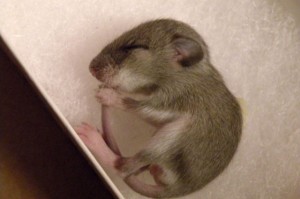
In addition to forgetting things, many people often have false memories, memories of things that never actually happened. False memory implantation often happens as a result of suggestion, but it can also be manipulated with specific technologies including gene editing and brain stimulation.
Most recently, researchers were the first to implant these false memories is sleeping mice. Additionally, these memories persisted after the animal woke up and affected the mouse’s behavior. To implant the memories, researchers targeted the medial forebrain bundle (MFB), part of the reward system, and the hippocampus which is important for memory. Within the hippocampus, they focused on place cells which are nerves that activate when the animal is in a specific location, a function important for spatial navigation
These place cells can be identified in an individual mouse by recording neural activity as the mouse enters various areas in an environment and noting which areas in the brain are activated in certain areas of the environment. Once the cells were identified, researchers stimulated the MFB while the mouse was awake and the place cells were active. This stimulation of reward circuitry while in a certain area produces a false positive association between a particular area in the environment and a reward, causing these mice to spend significantly longer in this particular area than randomly stimulated control mice.
During sleep, the neurons in the hippocampus replays the waking experiences, researchers continued to monitor brain activity while the mice were sleeping. Whenever the place cell of interest fired, a computer automatically stimulated the MFB. Once awake, these animals spent up to 5 times longer in the area that corresponded to the place cell that had been paired with MFP stimulation compared to randomly stimulated mice showing that the specific MFP stimulated mice has a conscious memory of a reward in this location.
These results indicate a successful technique for implanting false memories in mice, which could play a role in better understanding certain memory problems, mental illnesses involving memory, and ways to make eye-witness testimony more reliable
http://www.iflscience.com/brain/scientists-implant-false-memories-sleeping-mice
Filed under: Amelia C Tagged: False memory, hippocampus, memory, reward system











